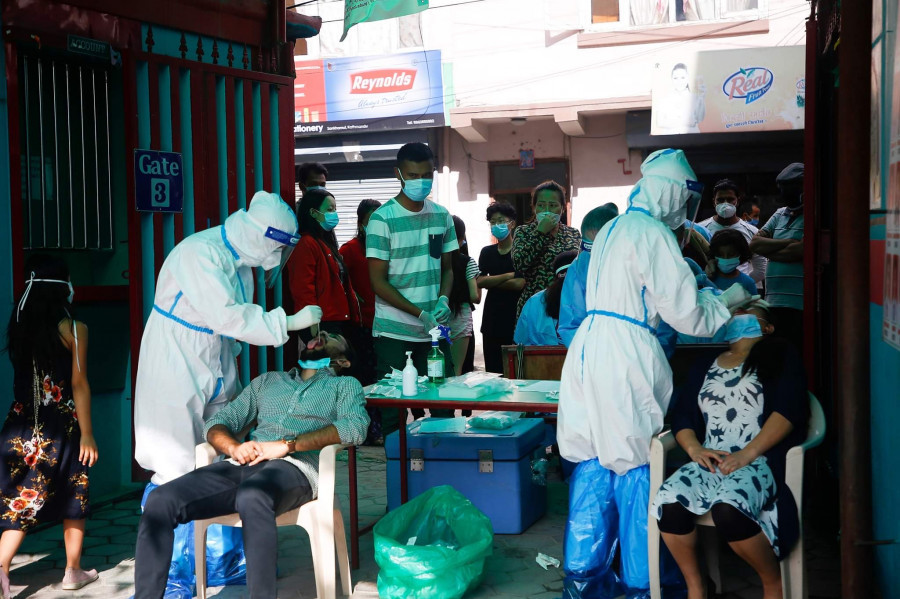Editorial
Pandemic fatigue
Sense must prevail in our battle to contain the spread of the coronavirus.
India’s daily Covid-19 caseload crossed the 100,000 mark for the first time on Monday, making it the second country after the United States to report record cases overnight. According to Reuters, with 103,558 new infections, the country’s daily infections have risen about 12-fold since February, when authorities relaxed most restrictions. The country also added 478 new deaths, raising the death toll to 165,101, according to data from the Health Ministry.
In the most affected Maharashtra state, hospitals are being overrun by patients as cases surge, and authorities have introduced a range of restrictions and weekend lockdowns to contain further spread of the coronavirus. Epidemiologists fear this second wave of the pandemic may be due to the more infectious variants of the virus and pandemic fatigue among the people, which has caused them to stop wearing a mask or following physical distancing protocol, putting themselves and others at risk. Last month, India also reported a ‘double mutant’ coronavirus variant, but it is unclear if the new form is more dangerous.
Like in India and across the globe, more infectious variants of the virus may also be responsible for the rising number of new infections and critical hospital admissions in Nepal. Public health experts warn that it is time to prepare for the worst-case scenario, and a lackadaisical approach could be detrimental for the public and the country. And the warning signs are all over the place, which we can’t afford to ignore. New infections are increasing in Nepal, with 266 cases and four deaths reported on Monday. At 4 percent of the peak and rising, the country is reporting the highest daily average since October 22.
With 1,832 active cases as of Monday, doctors fear the exact caseload could be 10 times higher as only one in 10 infected people might be seeking tests while hundreds of returnees from India have not been quarantined even after a significant number of people tested positive in rapid antigen tests. Instead, the returnees are travelling to their homes in the villages using public transportation. As the pandemic stretches into its second year, pandemic fatigue is causing both the government and the public to ignore the proven test-trace-treat strategy and Covid-appropriate safety measures.
Without increased testing and contact tracing and quarantine facilities, epidemiologists worry that the current infection rate, like last year, will reach a peak one month after it does in India. Testing rates, however, have remained alarmingly low in the past several weeks as cases surge and contact tracing is almost nonexistent. Health Ministry officials admit that most people seeking tests are healthy people doing so to go abroad. The public, by and large, has dropped safety measures, as evidenced by the sales figure of essentials like masks and hand sanitisers and the emerging number of cases in academic institutions.
We urgently need to understand that the second wave of a pandemic can be deadlier, not just to public health but also to our economy. The rise in new cases and critical hospital admissions indicates that a new wave of infections has already started. This is no time to make assumptions and let our guard down. With vaccines scarce and no certainty in supply, it is worrying that both the government and the public are noncompliant with proven pandemic mitigation strategies and behaviours. Sense must prevail in our battle to contain the spread of the virus.




 5.39°C Kathmandu
5.39°C Kathmandu












%20(1).jpg&w=300&height=200)

